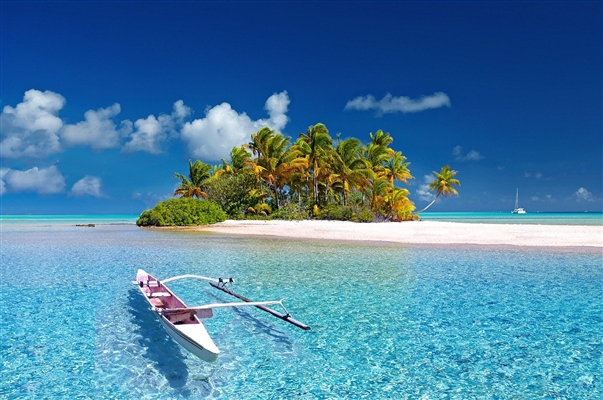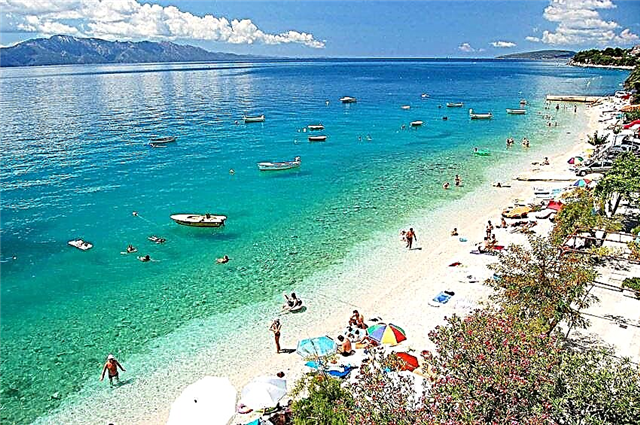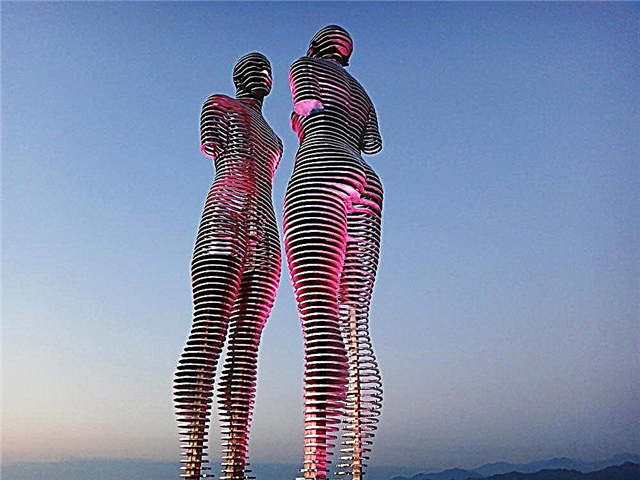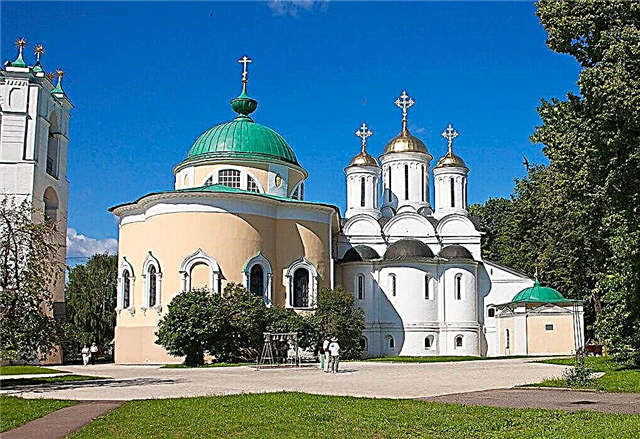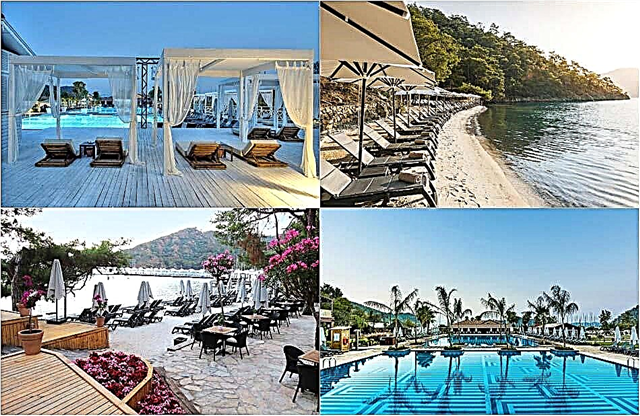138 settlements have the status of a city in the Republic of Slovakia. It is noteworthy that the population that lives in cities in the country is approximately equal in number to the inhabitants of villages and villages. Bratislava was proclaimed the capital of the state. The Slovak Republic has no access to the sea, so all tourist centers there are based on urban infrastructure.
The area of the country is 49 thousand km². On this territory, tourists can visit ancient castles, historical city centers, national parks and lakes in Slovakia. Travelers from all over the world come to the Slovak Republic for holidays. The cities of Slovakia are located close to each other. High-quality transport links have been established between them. Also from Bratislava you can quickly get to the capitals of the neighboring states.
The largest cities in Slovakia
List of the country's main cities in terms of population.
Bratislava
The capital city of the country, where many attractions of the state are concentrated. The area is 368 km². The heart of the republic is connected with other cities by means of a river port, air terminal, railway station and automobile communication. There are several universities in the city, there is a National Gallery, a zoo, churches and stadiums. Hostels, hotels and cafes for tourists are also literally at every turn.
Population - 429,564 people (2018).

Kosice
The settlement is considered the second largest in Slovakia. Population - 240 thousand inhabitants, area - 242 km². The city is based at the foot of the Čjerna Gora ridge. Urban areas occupy the valley of the Gornad River. Kosice is the scientific and educational center of the republic. This is where the Constitutional Court is located. The streets of the city are full of Gothic cathedrals, monasteries and synagogues.
Population - 240 688 people (2011).

Presov
The city was founded at the confluence of the Sekchov and Toris rivers. Population - 91 thousand people, area - 70 km². Children's railway, theater, Orthodox churches, as well as city fortifications - this is what Presov can offer to the guests of the city. Historic houses in the center also deserve close attention. The industrial sector is the backbone of the urban economy.
Population - 88 680 people (2018).

Zhilina
The city by the Vag River is located in the northwest of the country. Population - 84 thousand inhabitants, area - 80 km². Within the city limits, the Budatinsky castle is well preserved, and also on the Mariinsky Square there are town halls and churches. The economy of Zilina is supported by an automobile plant. Zhilin University operates in the city. The tourism sector in Zilina is well developed.
Population - 81,155 people (2014).

Banska Bystrica
The settlement is located in the center of the country. Population - 83 thousand inhabitants, area - 103 km². Banska Bystrica is called the unofficial capital of the state. There are still preserved monuments to the soldiers of the Soviet Army, there is a museum of the Slovak Uprising, churches and fortresses tower over the squares. Trade and tourism are the main sectors of the economy of the settlement.
Population - 78 327 people (2016).

Nitra
The settlement stands on the banks of the river of the same name. Population - 81 thousand people, area - 102 km². Nitra is the oldest settlement in the country. The first mention of the settlement dates back to 828. Nitra Castle is considered the main local attraction. Nitra is famous for its numerous palaces and churches with pointed spiers.
Population - 77,374 people (2016).

Trnava
The city in the west of the republic is located by the Trnavka River. Population - 68 thousand inhabitants, area - 71 km². Trnava, due to its territory, is included in the region of the Small Carpathians. The town was nicknamed Slovak Rome, as the seat of the archbishop is based there. There are many churches, cathedrals and synagogues in the city. The main streets are home to Renaissance palaces and houses, as well as baroque buildings. The World Ice Hockey Championship in the Junior category is held in Trnava.
Population - 65 382 people (2017).

Trencin
The western and industrial center of the country is located just 10 km from the border with the Czech Republic. Population - 56 thousand inhabitants, area - 82 km². Trencin is located on a hill. At the highest part of the city there is a unique castle Trenčianský hrad. There are many churches in the city; inscriptions left by the Romans in 179 have been preserved on the rocks near the settlement.
Population - 55 593 people (2016).

Martin
The northern city of Slovakia at the foot of Veельká Fatra. Population - 59 thousand people, area - 67 km². Martin is notable not only for museums and old mansions. There is an old cemetery in the city, where many prominent figures of Slovakia are buried. Of particular interest among tourists is the ensemble of the main square. Today Martin is considered the industrial center of the north of the republic.
Population - 54 978 people (2017).

Poprad
The city is located near the High Tatras on the river of the same name. Population - 55 thousand inhabitants, area - 63 km². The Poprad-Tatry airport is located within the city limits. The main attractions of Poprad are to be found in the old districts of the city. In this place, the tourist infrastructure is well developed, there are small ski slopes.
Population - 52,037 people (2015).

Prievidza
A settlement in the west of Slovakia, located near the Nitra River. Population - 51 thousand inhabitants, area - 40 km². The city is the mining center of the region. On the Mariana Hill near the city, the ancient ruins of the local castle are open to tourists. In the town itself there are temples and other historical sites. On the central streets there are restaurants with excellent national cuisine.
Population - 48,134 people (2013).

Zvolin
The city was formed near the confluence of the Hron and Slatina rivers. Population - 44 thousand people, area - 98 km². The visiting card of the city is Zvolensky Castle. The fortress is included in the list of cultural heritage of Slovakia. Interesting places in Zvolen include the Forest Museum, the Lutheran Church and the Church of St. Elizabeth. Zvolen becomes especially popular around Christmas. The beautifully decorated manors of the town sparkle with lights, and the streets are adorned with all sorts of New Year's décor.
Population - 43 100 people (2013).

Povazska Bystrica
The northwestern Slovak town is located on the Vah River. Population - 43 thousand inhabitants, area - 90 km². The industrial growth of the city officially began in 1918 with the relocation of the Weapons Factory to Povazska. Not far from the center in the town there are the ruins of the Povaz castle. An abandoned Jewish cemetery with tombstones resembling works of art begins outside the city. The settlement is conditionally divided into New and Old Town.
Population - 39 837 people (2017).

Nove Zamky
City on the Nitra River. Population - 42 thousand people, area - 72 km². The industrial center of the west of the republic can offer tourists a Franciscan monastery, a Calvinist church and an Orthodox synagogue. There are many monuments and parks in the well-groomed streets of Nove Zamky. Most of the hotels and cafes are located in the center. The city is connected by railway with Budapest and Vienna.
Population - 39 837 people (2017).

Michalovce
A small town in the east of the state. Population - 40 thousand people, area - 52 km². A special feature of Michalovce is the Uniate Church. Within the city limits there is a palace, where the Zemplin Museum operates today. There are also ruins of a pre-Romanesque rotunda in the city. Michalovce has existed on the Slovak lands since 1244. The town has a well-developed tourist infrastructure.
Population - 39,151 people (2017).

Spisska Nova Ves
At the lower reaches of the High Tatras, there is a town on the Hornad River. Population - 39 thousand inhabitants, area - 66 km².The popular tourist destination captivates with the nature around it and its quiet beauty. The Farsky Church is located on the main city street. The pompous opera house rises nearby. There is a zoo in the south of the town, as well as a children's rope park. The streets of the city are paved with old and picturesque paving stones.
Population - 37 326 people (2017).

Komarno
The island city on the Danube is located near Bratislava. Population - 37 thousand people, area - 102 km². There is a university on the island where they teach in Hungarian. Komarno has many ancient sights: the remains of a Roman camp, old forts, fortresses, churches, palaces and mansions. Komarno is famous for its dock where ships of any complexity are repaired.
Population - 37 366 people (2001).

Humenné
The border town is located near the border of Slovakia with Ukraine. Population - 36 thousand inhabitants, area - 28 km². There is an open-air museum in Humenna, whose exhibitions tell about the country's cultural heritage. The city also has a large sports complex with a water park and a bar area. The huge Ice Palace is also very large for such a compact town. In 2000, it was in Humenne that a monument to the soldier Švejk was erected. In the city square, everyone can see the illuminated musical fountain.
Population - 33 441 people (2017).
Bardeev
The eastern town in Slovakia is on the border with Poland. Population - 32 thousand inhabitants, area - 72 km². The city was awarded the ICOMOS prize as one of the most beautiful cities in the republic. Its cobblestone streets, pointed spiers of churches and ancient facades of buildings give the city an authentic and cozy ambiance. The old town center is made in the Gothic style and is in perfect harmony with the fragments of the city walls.
Population - 33 402 people (2003).

Levice
The town is located in the west of the country. Population - 37 thousand, area - 61 km². The city is considered an important industrial center of Slovakia. On its territory there is Levitsky grad. There are several museums and churches. Levitsky Castle in the city is the most visited place by tourists. All the necessary tourist infrastructure is present in Levice itself. Hotels accept guests, restaurants and cafes with national cuisine do not close their doors until late.
Population - 33,332 people (2017).

Liptovsky Mikulas
The settlement is located between the Tatra mountain ranges. Population - 33 thousand inhabitants, area - 69 km². The small town has well-developed transport links, there is a post office and a bank, a shopping center is open, and there are several restaurants. On the main square of the Liberators, there are various souvenir shops and mansions with authentic facades. The Vag river flows near the city.
Population - 32,593 people (2017).

Piestany
The resort is located on the banks of the Slnyava reservoir. Population - 30 thousand people, area - 44 km². At the resort, thermal springs are gushing out of the ground, around which sanatoriums are built. The spa's hospitals specialize in rheumatoid arthritis. The ruins of an ancient castle are based not far from Piestany. Within the city limits there is a church and several tourist sites.
Population - 29 660 people (2006).

Luchenets
The settlement is located in the central part of Slovakia. Population - 28 thousand people, area - 47 km². Noble estates are the hallmark of the city. The town entered a new stage of development after the end of the Second World War. Industrial enterprises were built there. The tourism sector also developed. Today, the city has created comfortable conditions for tourists.
Population - 27 991 people (2017).

Ruzomberok
Northern city in the republic. Population - 30 thousand people, area - 127 km². In 2000, a Catholic university was opened in Ruzomberok. The open-air museum near the city is considered an unsurpassed example of the ancient architecture of the Northern Carpathians. There is a synagogue in the city and several churches. The main square is named after the priest Glinka.
Population - 26 854 people (2017).

Topolchani
Western city located on the Nitra River. Population - 28 thousand inhabitants, area - 27 km². The city is famous for its Topvar brewing production. The main attractions are the Tovarniki Fortress and the Church of St. Andrew. Despite the fact that the town is considered an industrial center, it has not lost its medieval atmosphere.
Population - 25 492 people (2017).






